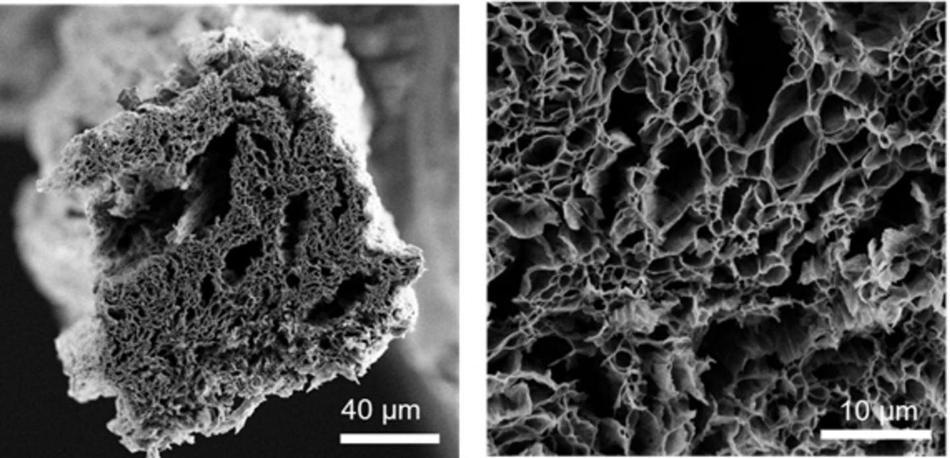Sep 2 2016
 This is scanning electron microscopy imagery of a graphene fiber made from microwave reduced graphene oxide. (CREDIT: Jieun Yang, Damien Voiry and Jacob Kupferberg)
This is scanning electron microscopy imagery of a graphene fiber made from microwave reduced graphene oxide. (CREDIT: Jieun Yang, Damien Voiry and Jacob Kupferberg)
A simple technique to produce high-quality graphene has been devised by Rutgers University engineers, which can be later used in next-generation energy and electronic devices.
This research work has been published online in the recent issue of the journal Science.
This is a major advance in the graphene field. This simple microwave treatment leads to exceptionally high quality graphene with properties approaching those in pristine graphene.
Manish Chhowalla, Professor, Rutgers' School of Engineering
Chhowalla, who is also the director of the Rutgers Institute for Advanced Materials, Devices and Nanotechnology stated that, post-doctoral associates and undergraduate students from Department of Materials Science and Engineering in Rutgers' School of Engineering were the ones who discovered this news technique.
Generally, undergraduates co-authoring a paper is rare, but he told that "the Rutgers Materials Science and Engineering Department and the School of Engineering at Rutgers cultivate a culture of curiosity driven research in students with fresh ideas who are not afraid to try something new.''
Graphene is desired for many applications because it is 100 times stronger than steel and can conduct electricity better than copper. Graphene can also dissipate heat in a rapid manner. For applications in domains like printable electronics, catalysts for fuel cells and electrodes for batteries, large-scale production of graphene is mandatory.
Graphene originated from graphite, which is a carbon-based material. This graphite is being used by generations of teachers and students in the form of pencils. Graphite is made up of layers or sheets of graphene.
The simplest technique to manufacture large quantities of graphene is by exfoliating graphite into individual graphene sheets with the help of chemicals. The drawback of this technique is that, side reactions take place when graphene comes in contact with oxygen. As a result, graphene oxide that is electrically non-conducting is produced, making it less useful for various other products.
For the past 20 years, one of the main challenges confronted by the scientific community that has been working with graphene is that, they find it difficult to remove oxygen from graphene oxide to manufacture high-quality graphene. The pristine atomic structure of graphene is damaged by oxygen and hence deteriorates its properties.
Chhowalla and his teammates discovered that baking the exfoliated graphene oxide for just one second in a 1,000 W microwave oven (the oven generally used in American households) will result in eliminating almost all the oxygen from graphene oxide.
The National Science Foundation, Rutgers Energy Institute, U.S. Department of Education and the Rutgers Aresty Research Assistant Program funded this research program.
The lead authors of this study are Damien Voiry, a former Rutgers post-doctoral associate in Chhowalla’s Nano-materials & Devices Group who is now at the University of Montpellier in France, and Jieun Yang, a post-doctoral associate in Chhowalla’s group. The research team also includes Jacob Kupferberg, who will be a Rutgers senior this fall; graduate student Raymond Fullon; Calvin Lee, who graduated in 2015; Hu Young Jeong and Hyeon Suk Shin from the Ulsan National Institute of Science and Technology in South Korea; and Chhowalla.